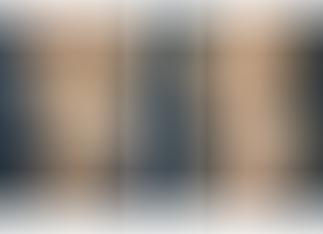In 2006, I gave a lecture on the Body lift procedure to other surgeons in my hospital. In gathering the information for my talk, two things struck me when reviewing the literature published by other physicians. In summary, the current literature concluded that:
- Surgeons are still reporting complications with the body lift procedure. These complications include wound separations and seromas
- Plastic surgeons are still “learning about the procedure”
My impression is that surgeons are having these problems because they do not use the Lockwood technique of body lifting. I use the Lockwood technique and feel very confident with the procedure and my results. Let me give you a brief history about the Body lift procedure, and how Dr. Ted Lockwood evolved the procedure.
Evolution of the Lockwood Body lift technique

The Body lift is a variant of dermatolipectomy, which is cutting away excess skin from the stomach area. A dermatolipectomy that goes around the body like a belt is called a belt lipectomy. The Body lift is a belt lipectomy. Prior to the 1980’s, the dermatolipectomy was used regularly to tighten the stomach area , but when Liposuction came along in the 1980’s, the dermatolipectomy quickly fell into disfavor. Who wanted a scar around the body when you could get a major Liposuction contouring around the midsection with practically no scar?
Dr. Ted Lockwood developed his Body Lifting techniques in the 1990’s
Despite the dermolipectomy falling out of favor in that time, a Midwestern surgeon by the name of Dr. Ted Lockwood kept working through the problems of unsightly scars from the dermatolipectomy procedure. In the early 1990’s , Dr. Lockwood came up with a solution that at first was hard for most surgeons to accept. His technique was to use a layer of the fat tissues known as Scarpa’s fascia as the tension bearing part of the skin closure. This is the deeper part of tissues, as opposed to the layers near the surface.
For the wound closure of this procedure, he proposed putting more tension at the deeper layers. The deeper layers were closed with more tension than the layers at the surface. Since the superficial layers had less tension this resulted in less spreading of the scar on the surgace. As a result of this strategy to suture tighter in the deeper layers of tissue, scars could be thinner.
His technique also involved less dissection in the abomen area which allowed better blood supply to the surgical area. Better blood supply is critical for healing and helps reduce post surgical complications. With better healing, scars have less inflammation, and look better.
In addition, he designed a procedure named high lateral tension abdominoplasty which put the maximum tension on the far sides of the dermatolipectomy scar. Despite his excellent surgical results, the entire concept of putting tension on a wound closure sounded like it went against everything I had been taught in my plastic surgery residency at Yale. But at Yale, we were trained to stay open minded and explore. Thus, began my journey to find out more about it.
Lockwood technique in Tummy Tuck: tighter suturing in the deeper planes , less dissection in the abdomen
During my training, plastic surgeons were taught never to close wounds under tension as it can lead to wound separation or bad scars. But Dr. Lockwood was promoting high tension for closing wounds! However, the tension was to be applied at the deeper layers, and the lateral sides of the wound.
Each year, plastic surgeons developing new techniques present their findings in special lecture courses at our Annual ASPS meeting. Fortunately, Dr. Lockwood’s course was being offered that year, so I signed up to learn more about his thinking. After listening to his lecture and seeing the video footage of his results in the operating room, I concluded that Dr. Lockwood was a genius! In summary he would:
- dissect less tissue which improved blood supply to the surgical area resulting in less complications related to fluid accumulation
- more tension on deeper layers for the wound closure resulting in a thinner scar
Using Scarpa’s fascia, Dr. Lockwood was able to limit his dissection (the amount of tissue lifted from its attachments and blood supply) to a much more limited area of the abdomen. Since Dr. Lockwood’s dissection area covered less volume, the blood supply within the entire abdomen and rib cage was much better! With more blood supply, tissues were able to heal much faster.
Lockwood technique: Better looking scars, less complications
Lastly, the additional tension for wound closure in the deeper layers gave a better aesthetic result. The stomach was flatter and the scar did not spread! I concluded that Dr. Lockwood’s technique resulted in a safer Body lift with a better scar and less complications.
My journey with the Lockwood technique
I started using Dr. Lockwood’s technique right after I took his course. Everything got better. My results were great!
Dr. Lockwood’s technique is superior to other Body lift techniques.
Dr. Rodriguez
The surgical outcome looked great and I had fewer complications such as wound separation and seromas. There were fewer complications due to the fact that the tissues got better blood supply since there was less tissue dissection during the procedure.
A year or two later, I reviewed the video tapes of Dr. Lockwood performing the Body lift procedure. Again I was amazed at his results because they were so much better than what you could get with just Liposuction or even Tummy Tuck plus Liposuction.
So why wasn’t his Lockwood technique taking off? The truth was that in the early 1990’s the explosion of Bariatric surgery had not yet started. Additionally, patients were still hung up with the Body lift scar which circled the entire circumference of the body. Some people just couldn’t get over the scar.
But the explosion of Bariatric surgery (stomach stapling, weight loss) in the late 1990’s changed everything. It created a group of people with large skin folds after massive weight loss. Their skin folds were around the entire circumference of their body. To them, the belt scar was much better than hanging skin and these patients were more than happy for a procedure that could get rid of the folds of skin, never mind the scar. The demand for the Body lift procedure thus began in the late 1990’s.
Unfortunately, in 2005, Dr. Ted Lockwood died just as the greatest need for his procedure came about. As other surgeons started reporting their experience, I took a course on Post Bariatric Reconstruction. This course was not based on the Lockwood technique. After taking this course, I made some modifications to Lockwood’s technique based on information learned in the course. However, I started noticing that I was having small wound problems and in 1 patient a bona fide wound separation. The small changes to the Lockwood Technique were resulting in problems instead of improvements! A procedure which had worked so well for me in the past was now “acting up”. The Lockwood procedure was better without the modifications!
After a lot of tinkering and pondering, I decided to go back to Lockwood’s basic technique of putting more tension for wound closure in the deeper layers. To make a long story short, I stopped doing all of the small changes that were being taught in the post bariatric reconstruction courses! Once I went back to the Lockwood technique all of my wound problems disappeared.
Body Lift complications are a function of surgical technique
To summarize, I think that some of the lessons of Dr Lockwood have been forgotten or misunderstood. My own experience tells me the complications seen with this procedure are not so much due to the post bariatric patients themselves, but to the operative technique being used. Dr. Lockwood’s technique of body lifting is the one that I use and I am confident that it is far superior to other body lifting techniques.
2024: Ozempic Tummy Tucks and Body Lifts
It is no secret that a large percentage of the US population is now on weight loss medications such as Ozempic, Semaglutide, Wegovy, and Tirzepatide. Many of these patient are losing 50-100 pounds. I expect that there will be an explosion in the number of Tummy Tucks and Body Lifts in 2025 going forward. I expect that as more surgeons venture into this area, they will discover the advantages of the Lockwood technique. His time has come!
Please feel free to ask questions in the comments. I welcome your thoughts!
(Article originally published Jan 22, 2007)




harriet cooley says:
Dr. Ricardo L Rodriguez says:
Angie Campbell says:
Dr. Ricardo L Rodriguez says:
rachel says:
Dr. Ricardo L Rodriguez says:
cyndi lane says:
Dr. Ricardo L Rodriguez says:
gee fazz says:
Dr. Ricardo L Rodriguez says: